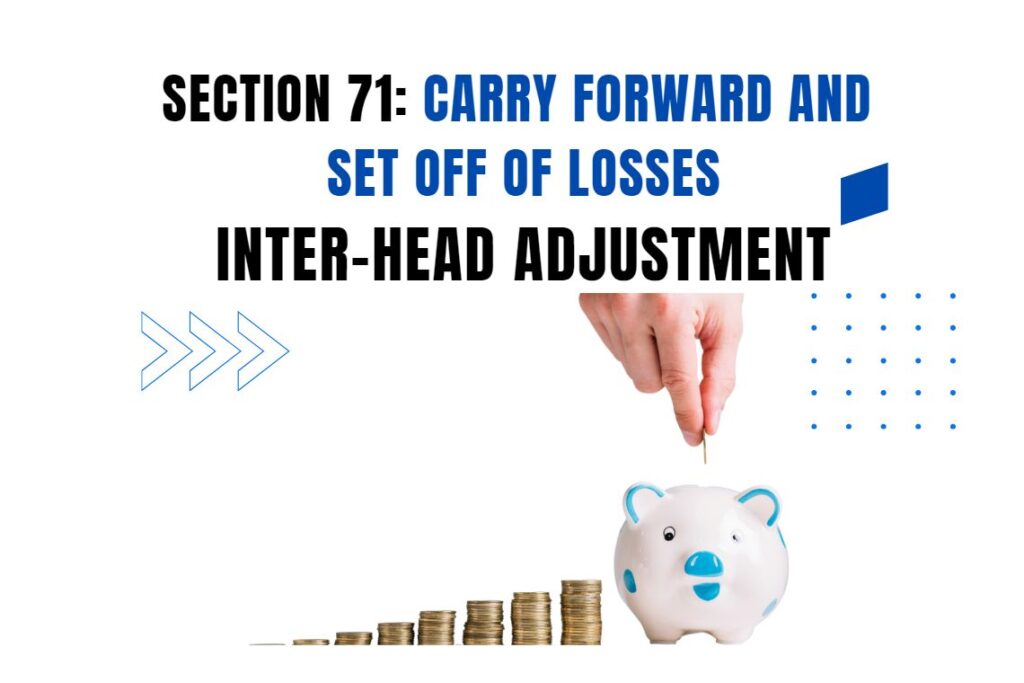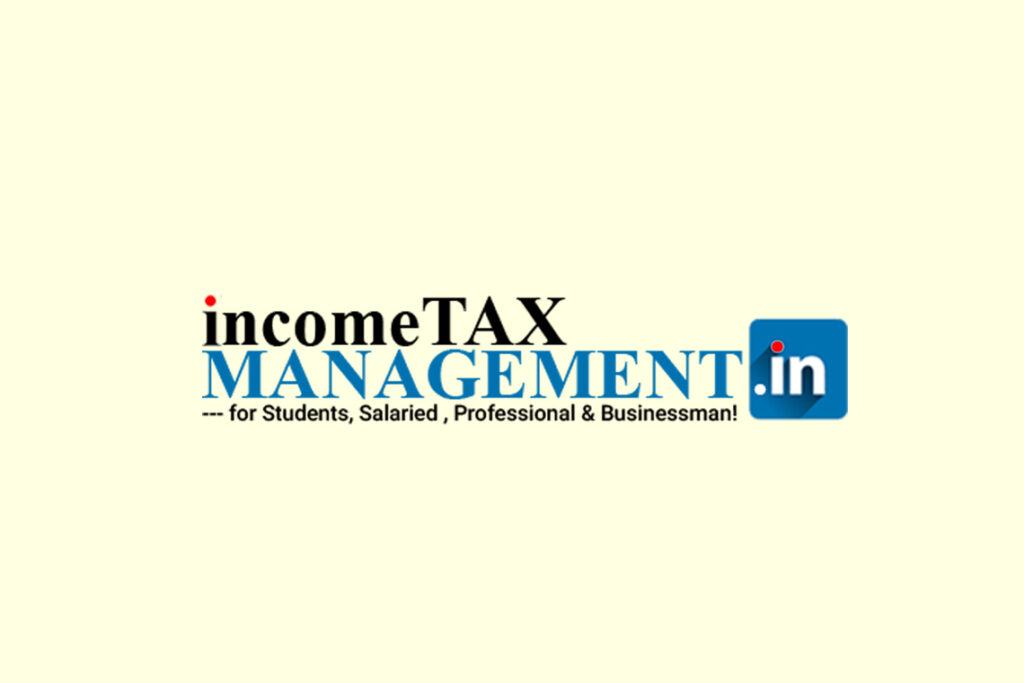The Income Tax Act, 1961 provides detailed provisions under Sections 70 to 80 for setting off and carrying forward of losses, which are crucial for tax planning and reducing tax liability. These provisions allow taxpayers to adjust current year losses against other income in the same year (set-off) or carry forward unadjusted losses to future years (carry forward).
Key Concepts
Set Off of Losses
Set off refers to adjusting losses against eligible profits of the same year. There are two types:
- Intra-head Set Off (Section 70): Adjusting loss from one source against income from another source under the same head of income.
For example:
- Loss from one house property can be set off against income from another house property
- Loss from textile business can be set off against profit from leather business (both under “Business and Profession” head)
- Inter-head Set Off (Section 71): After intra-head adjustment, remaining losses can be set off against income from other heads in the same year.
For example:
- House property loss can be set off against salary income (up to ₹2 lakh under old regime)
- Business loss can be set off against capital gains
Carry Forward of Losses
When losses cannot be fully set off in the current year, they can be carried forward to future assessment years with specific conditions:
- Different types of losses have different carry forward periods (typically 4-8 years)
- Most losses require timely filing of return to be eligible for carry forward
- Each head of loss has specific rules about what income it can be set against in future years
Detailed Rules for Different Types of Losses
1. House Property Losses (Section 71B)
- Set Off:
- Old regime: Can be set off against any other head up to ₹2 lakh
- New regime: Only intra-head set off allowed (cannot be set off against other heads)
- Carry Forward:
- Up to 8 assessment years
- Can only be set off against future house property income
- Belated return filing still allows carry forward
2. Business Losses (Non-Speculative) (Section 72)
- Set Off:
- Can be set off against any business income or other heads (except salary)
- Carry Forward:
- Up to 8 assessment years
- Must file return by due date under Section 139(1)
- Business need not continue for set off in future
3. Speculative Business Losses (Section 73)
- Set Off:
- Only against speculative business profits
- Carry Forward:
- Up to 4 assessment years
- Must file return by due date
- Business need not continue
4. Specified Business Losses (Section 35AD/73A)
- Set Off:
- Only against profits from other specified businesses
- Carry Forward:
- No time limit
- Must file return by due date
5. Capital Losses (Section 74)
- Short-term Capital Loss (STCL):
- Can be set off against both short-term and long-term capital gains
- Carry forward for 8 years
- Long-term Capital Loss (LTCL):
- Can only be set off against long-term capital gains
- Carry forward for 8 years
- New provision (2025 Bill): LTCL up to 31/3/2026 can be set off against any capital gains in FY 2026-27
6. Losses from Owning/Maintaining Race Horses (Section 74A)
- Set Off:
- Only against income from same activity
- Carry Forward:
- Up to 4 assessment years
- Must file return by due date
7. Unabsorbed Depreciation (Section 32(2))
- Set Off:
- Can be set off against any income except salary
- Carry Forward:
- No time limit
- Not mandatory to file return by due date
Important Exceptions and Restrictions
- Speculative Losses: Can only be set off against speculative profits
- Salary Income: No losses can be claimed under this head
- Casual Income: No loss can be set off against winnings from lotteries, races, etc.
- Exempt Income: Loss from exempt source cannot be set off against taxable income
- New Tax Regime Restrictions:
- House property loss cannot be set off against other heads
- Cannot carry forward house property loss to set against future house property income
Order of Set Off
- First apply intra-head set off (Section 70)
- Then apply inter-head set off (Section 71)
- For carry forward:
- Current year depreciation first
- Then unabsorbed business loss
- Then unabsorbed depreciation
Practical Examples
Example 1 (Old Regime):
- Salary: ₹4,20,000
- House property loss: ₹2,30,000
- Business loss: ₹1,20,000
- Interest income: ₹85,000
Computation:
- Set off ₹2 lakh house property loss against salary (rest ₹30k carried forward)
- Set off ₹85k business loss against interest income (rest ₹35k carried forward)
- Taxable income: ₹2,20,000
Example 2 (Capital Gains):
- STCL of ₹3,000 and LTCL of ₹1,000 in AY 2020-21 (both carried forward)
- In AY 2021-22: STCG ₹5,600
- Set off ₹3,000 STCL against STCG
- Taxable STCG: ₹2,600
- LTCL ₹1,000 remains
Key Changes for AY 2025-26
- LTCG up to ₹1.25 lakh can now be reported in simpler ITR-1/ITR-4 forms
- Capital gains must be reported separately for transactions before/after July 23, 2024
- Buyback proceeds treated as deemed dividends from October 1, 2024
- Increased threshold for asset/liability reporting in ITR-2 to ₹1 crore
Compliance Requirements
- Most losses require filing return by due date under Section 139(1) to be eligible for carry forward
- Exceptions: House property loss and unabsorbed depreciation don’t require timely filing
- New regime filers cannot carry forward house property losses
Understanding these provisions helps taxpayers optimize their tax position by properly utilizing losses to reduce taxable income both in current and future years. Proper documentation and timely filing are essential to preserve these benefits.






